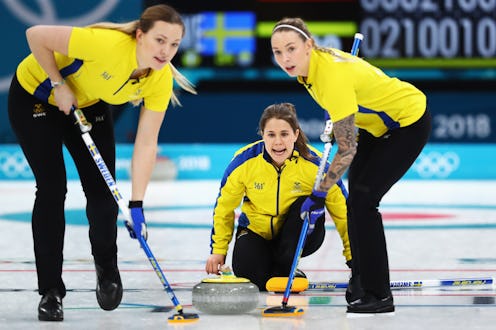
Especially for Americans, the Olympics tend to offer an opportunity to learn about sports not commonly featured in the sports pages of high-circulation publications. One such event would be curling, which you might notice sometimes uses a "round robin" tournament system. In the Olympics, this means that during preliminary rounds, every team plays each other team, at least once.
The opposite of a round robin would be an elimination style tournament, which is the most common type of tournament in American sports. In an elimination tournament, in contrast to round robins, the winners of each round successively advance and play each other. This is how most tennis tournaments work, for example — winners of each round advance to play each other until, ultimately, there is only one winner left.
While round robin style tournaments aren't the only way for curling competitions to take place, the style is used in early rounds of Olympic competitions. It is the style of competition that takes place before an elimination round, which comes afterward, and which ultimately leads to medals.
Round robin style tournaments function as an equalizing way to determine who advances to the next round of games. This is because instead of being "knocked out" of a round after one unfortunate loss, teams are able to accumulate wins (or losses) into a final statistic. In theory, this would reflect an overall performance rather than the results of a single match.
Take, for example, the men's curling round robin. Out of the six games played, Sweden, Canada, Switzerland, and Great Britain won the greatest number of games. Because of their demonstratively stronger all-around performance, their teams then advanced to the next curling round.
Another way to put round robins into perspective is to consider the way that they take place within popular American sports. While it's true that most tournaments in the United States are elimination style, most regular seasons function exactly like a round robin. Take, for example, the NFL. During the regular season, each team within the league's conferences plays each other. At the end of the season, the teams with the most wins advance to the playoffs. The playoffs, of course, function as elimination tournaments.
In that way, the concept of a round robin tournament actually isn't that different from what American viewers already know. All that really changes is the way that it is referred to by sports officials.
If you think about it, round robins are also a lot like how individual sports are scored in the Olympics. Take, for example, the individual halfpipe competitions. Before the medaling round, there is a qualifying round. During the qualifying round, each team has an opportunity to do their best down the course.
While they aren't competing against other teams directly, as they do in curling, they are still each offered several opportunities to showcase their skills, in lieu of being automatically kicked out after one low score.
Those who score the highest after three successive rounds are chosen to advance to the final round. And, of course, at that point, only three individuals can officially place.
The round robin tournament rounds in Olympic curling lead the way for the first of two knockout rounds. After four teams qualify, two games follow. The two teams which come out on top in that round then advance to the final round. The winner of that round is the tournament champion.
Curling also isn't the only game to implement round robin tournaments. Chess, Scrabble, and bridge also employ the tournament method.
As for curling at the 2018 PyeongChang Olympics, round robin tournaments are scheduled to take place until Feb. 22, when tie-breakers and semi-final rounds kick in. Until then, every team will be given an opportunity to show how well they can play.